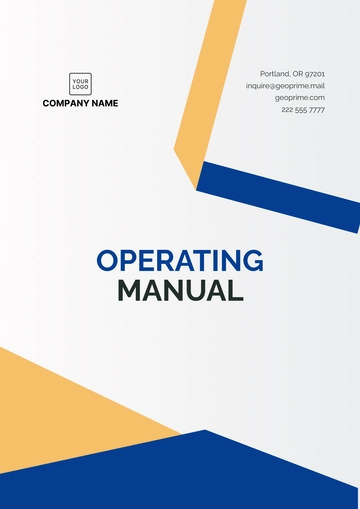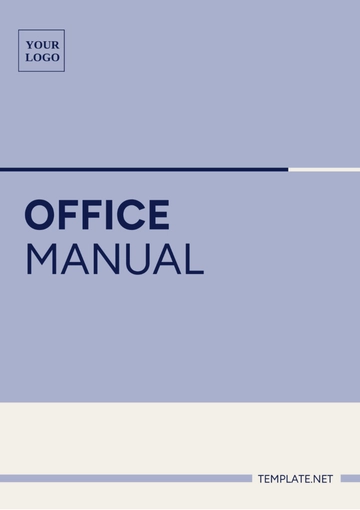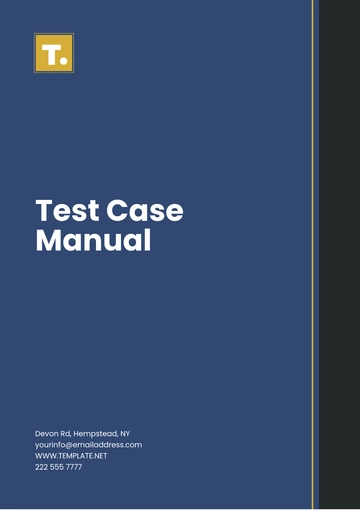Free Education and School Staff Training Manual

Prepared by: [Your Company Name]
Date: [Date]
I. Introduction
Welcome to the Education and School Staff Training Manual. This comprehensive guide is designed to support the professional development of school staff, fostering a collaborative environment where every member can thrive. In this manual, you will find essential policies, procedures, instructional strategies, and resources tailored to help you perform your roles effectively and efficiently. We aim to ensure you understand your responsibilities and adhere to the expectations within our educational environment, ultimately enhancing student learning and success.
This manual is a living document; we encourage staff to provide feedback and suggestions for improvement. Your insights are invaluable in ensuring the manual meets the needs of all staff members.
II. School Policies and Procedures
Understanding the school's policies and procedures is crucial to maintaining a safe and productive learning environment. Here are some key areas:
A. Attendance and Punctuality
Regular attendance and punctuality are essential for both staff and students. All staff members are expected to:
Arrive on time: Ensure you are present in your designated area at the start of the workday.
Notify Supervisors: If unable to attend work, notify your supervisor at least one hour before your shift begins.
Document Attendance: Utilize the school’s attendance system to record your attendance accurately.
B. Code of Conduct
Our school community thrives on respect, responsibility, and integrity. Staff members must adhere to the following code of conduct:
Professional Behavior: Treat students, colleagues, and parents with respect at all times.
Dress Code: Follow the established dress code that reflects professionalism and appropriateness for the educational setting.
Confidentiality: Maintain the confidentiality of student records and sensitive information.
C. Grading and Assessment Policies
Clear grading and assessment policies are crucial for providing fair and accurate evaluations of student performance. Staff must:
Use Established Criteria: Follow the grading rubric outlined by the administration for consistency.
Provide Timely Feedback: Ensure all assignments are graded and returned to students within a specified timeframe.
Communicate with Parents: Regularly update parents on student progress through report cards and conferences.
D. Disciplinary Procedures
To maintain a positive learning environment, staff must understand and implement disciplinary procedures:
Behavioral Interventions: Use positive behavioral interventions before resorting to disciplinary actions.
Documentation: Record any behavioral incidents in the student’s file and report to the administration.
Support Systems: Collaborate with counselors and support staff to address ongoing behavioral issues.
III. Roles and Responsibilities
Each staff member plays a vital role in the success of our school. Here are the general responsibilities categorized by role:
A. Teachers
Responsibilities:
Prepare and deliver engaging instructional activities that meet diverse learning needs.
Maintain up-to-date grading and assessment records using the school’s online system.
Participate in faculty meetings, contributing to discussions on curriculum and school policies.
Engage in continuous professional development to enhance teaching practices.
B. Administrative Staff
Responsibilities:
Assist in the preparation of school reports, ensuring accuracy and timeliness.
Handle student and teacher records, maintaining confidentiality and security.
Coordinate school events and activities, including parent-teacher meetings and open houses.
Serve as a liaison between teachers and administration to ensure effective communication.
IV. Training and Development Opportunities
We encourage ongoing learning and professional growth. The following opportunities are available:
A. Workshops and Seminars
Attend workshops on best practices in education, classroom management, and technology integration.
Participate in seminars led by experts in the field, focusing on innovative teaching strategies.
B. Online Training Modules
Access a range of online training modules covering topics such as special education, diversity, and inclusion.
Complete mandatory training on child safety and reporting protocols.
C. Mentorship Programs
Join a mentorship program pairing experienced teachers with new staff for guidance and support.
Engage in peer observations to learn from each other’s teaching practices.
D. Conferences and Networking Events
Attend regional and national education conferences to connect with other professionals and gain new insights.
Participate in local networking events to build relationships within the educational community.
V. Instructional Strategies
Effective instructional strategies are essential for student engagement and learning. Consider implementing the following techniques:
A. Collaborative Learning Activities
Foster teamwork through group projects and peer-assisted learning, allowing students to learn from one another.
Use cooperative learning structures to encourage interaction and build social skills.
B. Interactive Technology Use
Incorporate interactive technology tools, such as smart boards and educational apps, to enhance engagement.
Utilize online platforms for virtual collaboration and communication among students.
C. Differentiated Instruction
Tailor lessons to meet the diverse needs of students, including varying levels of ability and learning styles.
Use assessments to identify individual strengths and areas for improvement, adapting instruction accordingly.
D. Project-Based Learning
Implement project-based learning initiatives that encourage critical thinking and real-world application of knowledge.
Allow students to explore topics of interest in-depth, fostering a sense of ownership in their learning.
VI. Crisis Management Protocols
In the event of a crisis, all staff must be prepared to respond appropriately. Familiarize yourself with the following protocols:
A. Emergency Evacuation Plan
Review exit routes and assembly points outlined in the emergency plan.
Participate in regular evacuation drills to ensure preparedness.
B. Lockdown Procedures
Understand specific actions and signals to initiate lockdown protocols during emergencies.
Stay informed about procedures for communicating with students during a lockdown.
C. Health Emergencies
Locate first aid kits and automated external defibrillators (AEDs) within the school.
Know basic first aid procedures and how to contact emergency services.
VII. Resources and Support Services
A variety of resources and support services are provided to assist both staff and students:
A. Counseling and Mental Health Services
Access counseling services for students and staff, including mental health resources and crisis intervention.
Collaborate with counselors to address student needs and promote a supportive environment.
B. Technology Support Desk
Utilize the technology support desk for assistance with hardware and software issues.
Participate in training sessions on new educational technologies introduced in the classroom.
C. Library and Research Facilities
Encourage students to use the library for research and projects, with access to various resources and materials.
Collaborate with library staff to integrate research skills into the curriculum.
D. Parent-Teacher Associations
Engage with the Parent-Teacher Association (PTA) to foster partnerships between parents and the school.
Participate in events and initiatives organized by the PTA to strengthen community involvement.
- 100% Customizable, free editor
- Access 1 Million+ Templates, photo’s & graphics
- Download or share as a template
- Click and replace photos, graphics, text, backgrounds
- Resize, crop, AI write & more
- Access advanced editor
Develop a comprehensive training program for educators with Template.net's Education and School Staff Training Manual Template. This editable and customizable template allows you to create structured training materials for teachers, administrators, and school staff. Editable in our Ai Editor Tool, you can quickly tailor content to match your institution's educational standards and policies, ensuring staff are well-prepared to support student success.





























